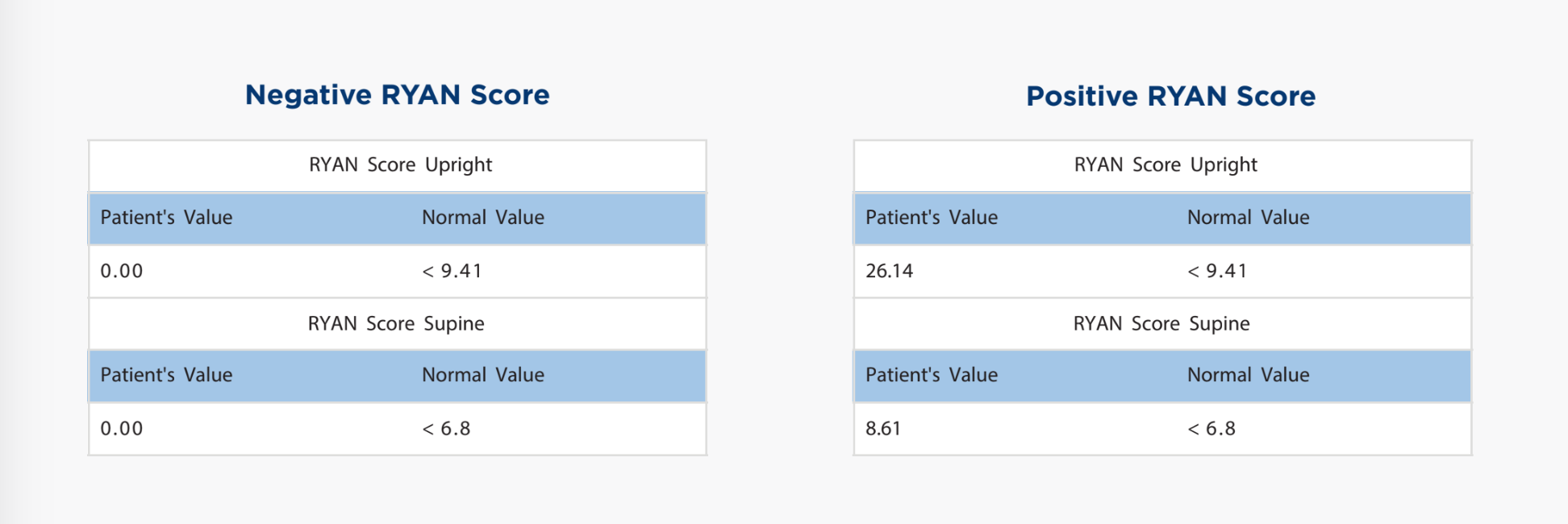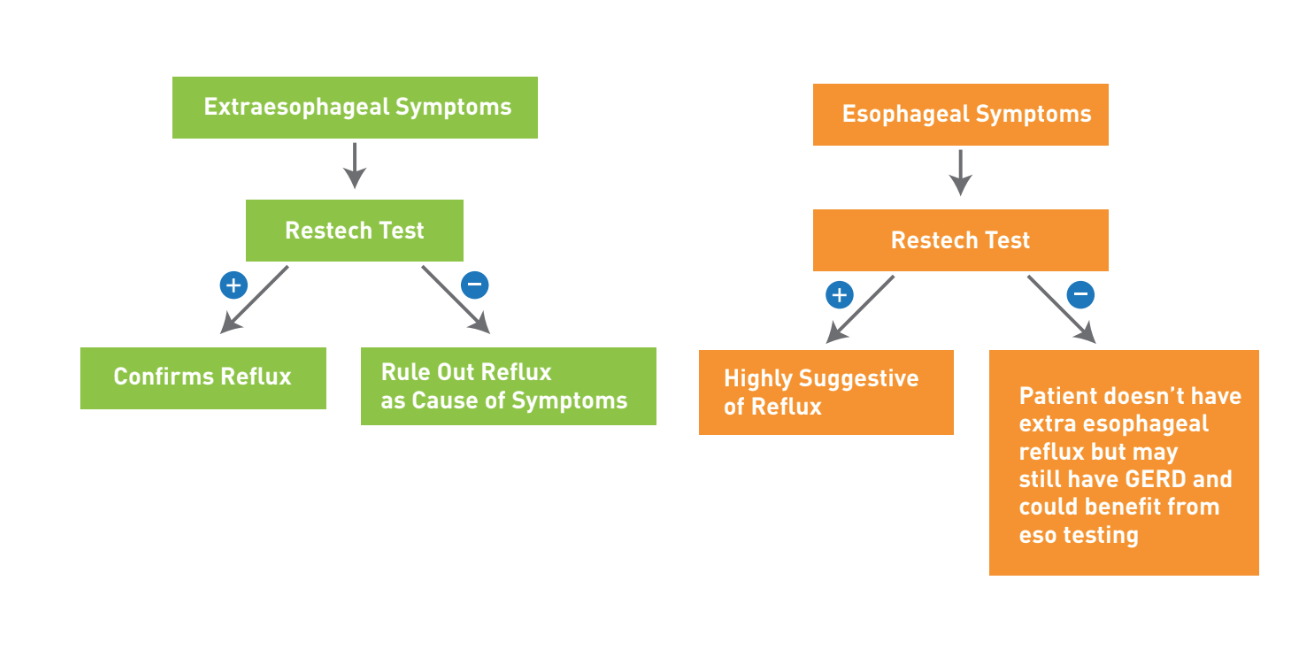
Is LPR Prevalent Among Patients with COPD?
November 21, 2018
New Year’s Resolution: Get my Reflux Under Control!
January 3, 2019What’s a RYAN Score?
The RYAN Score was created by Dr. Tom Ryan DeMeester, Professor and Chairman Emeritus at the Department of Surgery Keck School of Medicine, University of Southern California.1 The score is proprietary to Restech’s DataView software and is used to interpret oropharyngeal pH study results. With high specificity for severe reflux patients, it defines normal values and identifies patients with abnormal pharyngeal pH environments.1
The RYAN Score uses thresholds of pH 5.5 for upright and 5.0 for supine positions; the two are analyzed separately to account for decreased saliva production during sleep. To analyze pH study data, the RYAN Score uses three components:
- The percent time pH below pH threshold
- The number of episodes in which the pH dropped below threshold
- The duration of the longest episode
These components are calculated together to generate the composite RYAN Score. A normal composite RYAN Score for upright is less than 9.41 and for supine is less than 6.8.
**Note: The software automatically removes pH data collected during meal periods in its calculations. The data is not removed from the report, so physicians are able to analyze pH levels alongside meal periods.
Oropharyngeal pH testing is a key element in identifying reflux disease as the cause of laryngeal complaints. Why?
- Self-reported symptom scores (RSI) do not reliably predict the presence or severity of acid reflux disease.2
- It is important to confirm visual findings with an objective test at the site of symptoms when diagnosing laryngopharyngeal reflux (LPR). Other sources besides reflux can irritate and damage extraesophageal tissue and produce similar visual findings.
- Conventional esophageal pH catheters are not designed to effectively measure in the non-liquid pharyngeal environment. Their pH sensor can dry out and produce artifacts when used in the pharynx, and the accumulation of mucus and food on the sensor disrupts electrical continuity.
So what does the RYAN Score look like? What does it mean & why does it matter?
POSITIVE: If the patient’s values for upright and/or supine exceed the normal values, the RYAN Score is positive. A positive RYAN Score shows that a patient has “severe” reflux. There is no upper limit to the RYAN Score.
After treatment with bid PPI therapy, 60% of patients retested with Restech had a positive RYAN Score and failed to achieve pH normalization, despite many achieving symptomatic relief.3
NEGATIVE: If the patient’s values for upright and/or supine do not exceed the normal values, the RYAN Score is negative. A negative RYAN Score does not rule out mild or moderate reflux. It is important for the physician to review the entire study and determine if the patient’s reflux patterns reveal mild or moderate reflux, both of which can benefit from lifestyle modifications and/or different reflux therapies.

A physician can establish a diagnosis based on the patient’s symptoms and RYAN Score results. This flowchart illustrates possible diagnoses supported with a Restech test.

If you’d like to see how the RYAN Score can aid in your evaluation of extraesophageal symptoms, download a sample Report page.
References:
- Ayazi S, Lipham JC, Hagen JA, et al. A New Technique for Measurement of Pharyngeal pH: Normal Values and Discriminating pH Threshold. J Gastrointest Surg. 2009 Aug;13(8):1422-9.
- Beaver ME, Karow CM. Clinical Utility of 24 Hour Pharyngeal pH Monitoring for Hoarseness. J Laryngol Voice. 2012;2(2):60-3.
- Waxman J, Yalamanchali S, Valle ES, Pott T, Friedman M. Effects of Proton Pump Inhibitor Therapy for Laryngopharyngeal Reflux on Post-treatment Symptoms and Hypopharyngeal pH. Otolaryngol Head Neck Surg. 2014 Mar;150(6):1010-1017.

